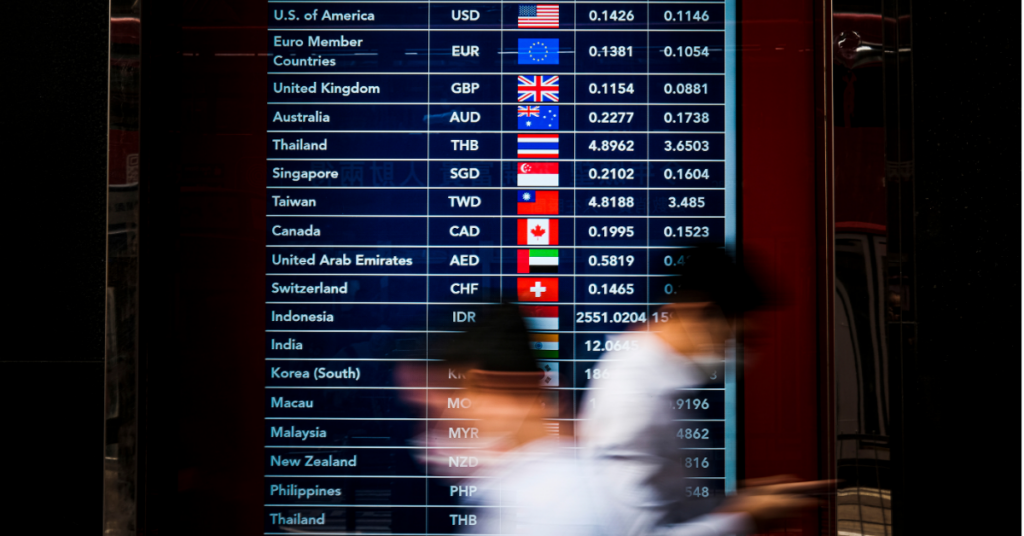
In the fast-paced world of forex trading, understanding the ever-shifting tides of currency strength is crucial for success. For forex CFD (contract for difference) traders, particularly those focusing on the U.S. dollar (USD), deciphering terms like “strong dollar” and “weak dollar” can be a game-changer. This knowledge empowers you to make informed trading decisions based on the ever-fluctuating exchange rates.
Let’s dive deep and unpack the meaning of a strong and weak dollar, explore its practical applications in CFD trading, and unveil the key factors that influence its strength.
Unlike tangible goods, currencies don’t have an inherent value. Their worth is relative, determined by the market’s perception and the exchange rate – the number of units of one currency required to purchase one unit of another.
Imagine a scenario where 1 USD can buy you 1 EUR (Euro). In this instance, both currencies are considered equal. However, if the exchange rate shifts to 1 USD buying only 0.90 EUR, the dollar has weakened relative to the euro. Conversely, if 1 USD buys 1.10 EUR, the dollar has strengthened against the euro.
In conclusion, a “strong dollar” refers to a situation where it appreciates in value relative to other currencies. Conversely, a “weak dollar” indicates a depreciation in its value compared to other currencies.

To visualise this concept in a light-hearted way, consider The Economist magazine’s “Big Mac Index.” This clever tool uses the price of a Big Mac hamburger, a standardised menu item available at McDonald’s restaurants worldwide, to compare the purchasing power of different currencies.
Here’s why it works: The Big Mac incorporates various factors into its price, including local ingredients, labour costs, rent, and even taxes. By comparing Big Mac prices across countries, we can gain insights into relative currency valuation.
Imagine a scenario where a Big Mac costs roughly the same in the US and China. This suggests that a dollar and the Chinese yuan have similar purchasing power in terms of this particular burger. However, if a Big Mac costs significantly more in the US compared to China, it might indicate a weaker dollar relative to the yuan.
The Big Mac Index isn’t a perfect science, but it provides a fun and surprisingly effective way to understand the basic concept of currency valuation.
Understanding the dollar’s strength has real-world implications for both consumers and traders.
Strong dollar:

Weak dollar:
Several key factors influence the U.S. dollar’s strength in the global market:

Knowing the potential direction of the dollar’s strength can inform your trading decisions. Here are some approaches to consider.
Technical analysis
Technical indicators like moving averages and the relative strength index (RSI) can help identify potential trends and entry/exit points based on your analysis of a strong or weak dollar outlook.
For example, a strong downward trend in the EUR/USD pair on a moving average chart might suggest a weakening euro against a strengthening dollar, potentially signalling a good time to short EUR/USD.
Fundamental analysis
Staying informed about upcoming economic data releases like employment numbers, inflation reports, and retail sales figures can provide valuable insights.
Additionally, keeping an eye on central bank meetings, particularly those of the Federal Reserve (Fed), can shed light on potential interest rate adjustments that can impact the dollar’s strength.
Finally, monitoring geopolitical events can help you anticipate potential safe-haven currency flows that might influence the dollar’s value.
Risk management
Regardless of the dollar’s strength, it’s crucial to prioritise risk management in your CFD trading endeavours. Employing stop-loss orders acts as a safety net, automatically exiting your position when the price reaches a predefined level, thereby limiting potential losses.
In conclusion, understanding the concept of a strong and weak dollar empowers you to make informed trading decisions. By considering the factors influencing the dollar’s strength, coupled with technical and fundamental analysis, you can develop a more strategic approach to navigating the forex market. Remember, continuous learning and responsible trading practices are key to achieving your trading goals.